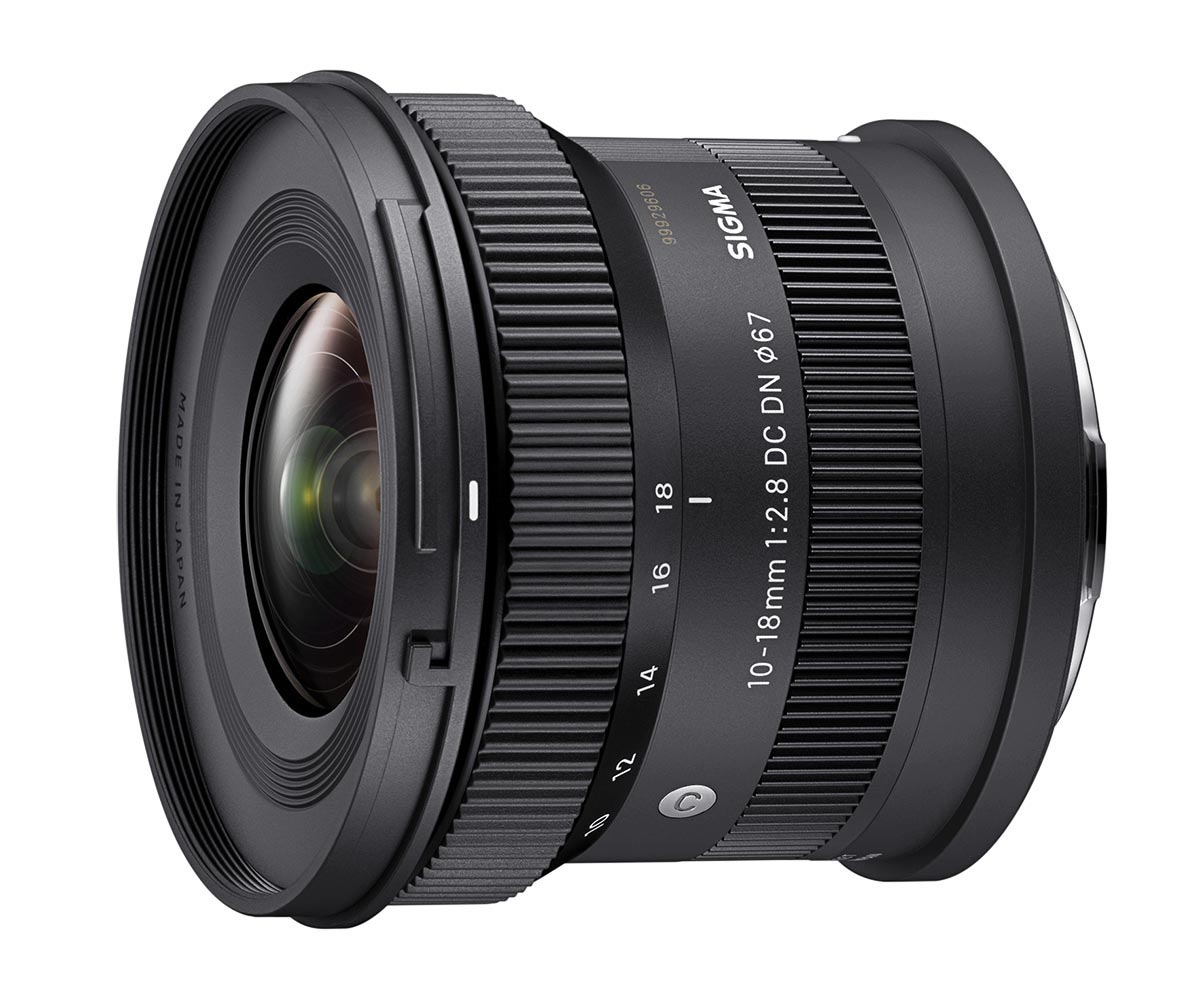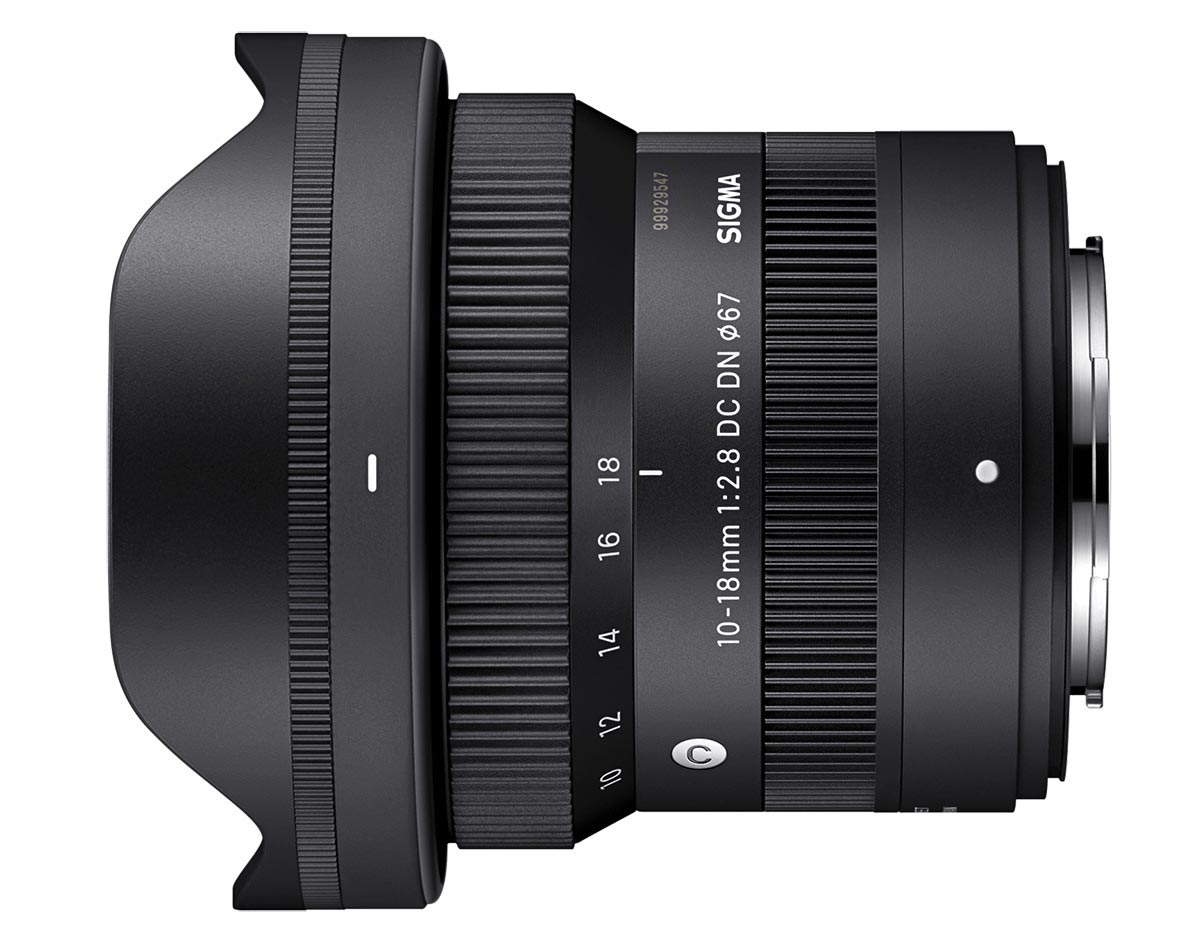Ready for the Big Wide World
A review of the ultra-wide-angle Sigma 10-18mm F2.8 DC DN Contemporary lens
• March 2024 issue

For most photographers, an ultra-wide-angle lens is a niche tool, something you need for a specific job, not one of your regulars. You don’t want to spend a lot of money for a tool you don’t use often, nor do you want to add a lot of bulk or weight to your equipment case. The Sigma 10-18mm F2.8 DC DN Contemporary lens fills that niche with the capacity to deliver.
It’s currently the world’s smallest and lightest f/2.8 ultra-wide-angle zoom lens designed for mirrorless ASP-C cameras. If your mirrorless is a full-frame, you can still use this lens, but you’ll get a significant vignette around the edges at 10mm unless you engage an ASP-C crop mode or crop in post. On my Sigma fp camera, this means the focal range is a 15-27mm full-frame equivalent based on the field of view described to the sensor, and a 1.5X APS-C crop factor, resulting in a 2,840x2,560-pixel resolution capture. On the higher-resolution Sigma fp L camera, it would be 6,240x4,144 pixels.
Sigma’s Contemporary lenses are more economical than the top-of-the-line Art series and tend to be smaller and lighter. The Sigma 10-18mm F2.8 DC DN C is a mere 9.2 ounces, measuring 2.8 inches in length and 2.4 in diameter. The included petal-type hood is petite and features a push-on design. This on/off method isn’t intuitive; I had to go to the instructions to figure it out. Once I knew what I was doing, on and off were simple operations, but I never got the hang of reversing the hood to fit back on the lens for minimal storage size. The push-on design uses a spring lever mechanism that’s unique among camera manufacturers, and the design allows the hood to be thinner and smaller.

The lightweight and compact design make this lens good for travel, on-the-go video, and content creation. You could easily fit this into a waist bag along with another lens without feeling like you were lugging unnecessary weight.
At the 10mm focal length, the optical design allows you to focus at just 4.6 inches (11.6cm) from the image sensor plane and has a maximum 1:4 magnification ratio, allowing close photography with distinct background separation. The lens features 13 elements in 10 groups in an inner-focus system with a stepping motor.

With a minimum focusing distance ranging from 4.6 inches at 10mm to 7.6 inches at 18mm, the Sigma 10-18mm F2.8 DC DN Contemporary lens allows you to get close to a subject and still capture a wide composition. This image was taken at 18mm focal length.

A wide-angle lens works wonderfully to capture a leafless winter tree canopy in long exposures to create star trails in a night sky. This image is a blended composite of 99 10-second exposures.
Auto and manual focus are smooth, and the optical design minimizes focus breathing. The stepping motor is quiet for video use. With its f/2.8 constant aperture zoom, the lens does well in low light, for video, and to create a shallow depth of field.
I enjoyed testing the 11.6-centimeter minimum focusing distance at the wide end of the focus range. Since that measurement is from the sensor plane, you’re nearly touching the object with the lens at that distance, yet you can still get a remarkably wide background around and behind the subject.
I also took advantage of having the ultra-wide-angle lens to try some star trail photography. I took a set of 99 10-second exposures at f/5.6, ISO 800 and blended them together with pleasing results.
The Sigma 10-18mm F2.8 DC DN Contemporary is a nifty ultra-wide-angle lens that’s lightweight, compact, and affordable at $599. If you want to add wide-angle work to your repertoire, this is a great lens to get creative with. It’s available in L-Mount, Sony E-Mount, and Fujifilm X Mount systems. It’s compatible with camera functions such as electronic image stabilization and aberration correction.
Joan Sherwood is a senior editor.

 View Gallery
View Gallery